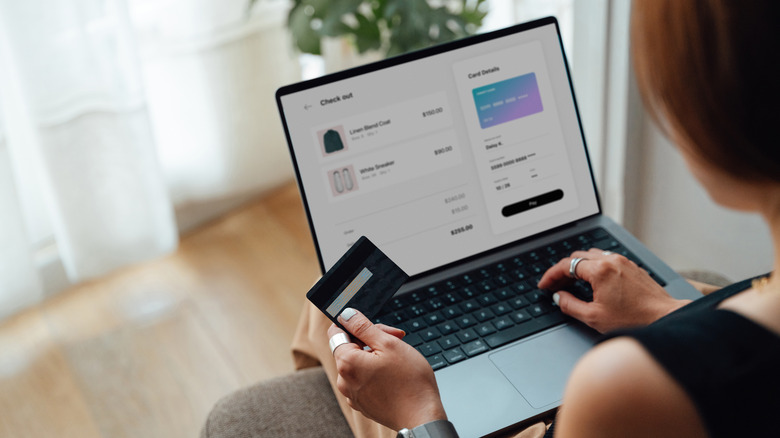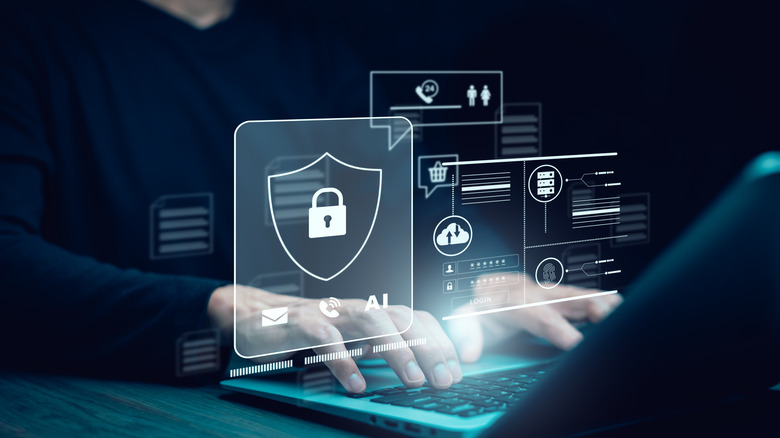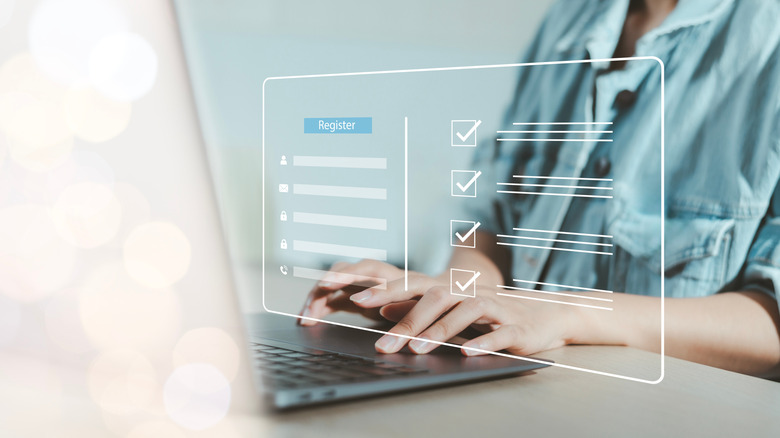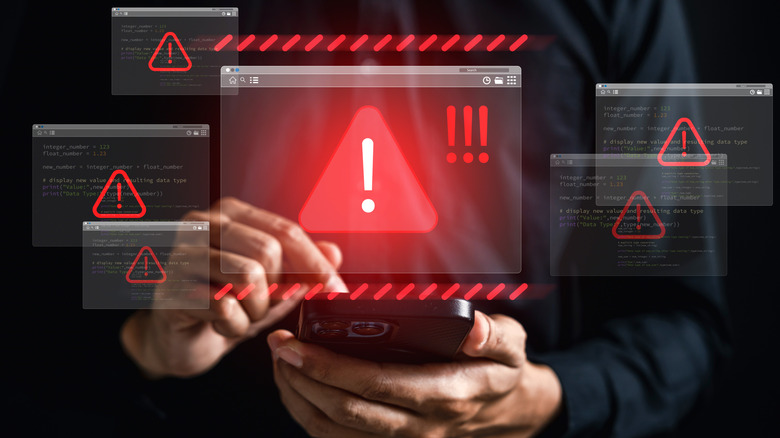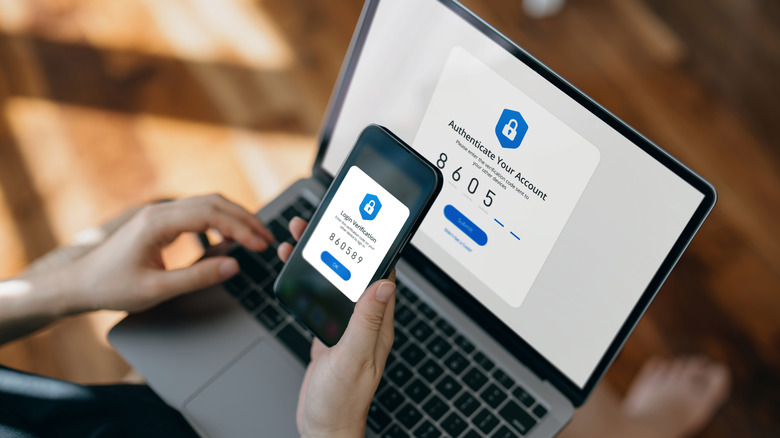Your Personal Data Could Be All Over The Internet - Here's How To Find & Remove It
These days, keeping your personal information safe feels like a losing battle. After all, even someone you've never met can now get access to your home address, phone number, and even employment history with just a few clicks. Sure, identity thieves often get the most attention due to the damage they cause. But in reality, exploiters do not always need to work hard to find your personal data.
Each time you browse the internet, you contribute to your digital profile. This digital profile can include everything from your shopping habits and interests to where you work and live. At a glance, the data collected might seem harmless, but over time, your digital profile builds up and reaches marketers, advertisers, and sometimes even hackers. This results in a wide trail of information that feels hard (if not impossible) to erase. Plus, it makes you more vulnerable to not just scams or frauds, but also unwanted intrusions into your life.
The good news is that you don't have to stay exposed, as you can easily regain control over your personal information. All you need is persistence, the right tools, and a good strategy, like keeping track of your Google privacy settings.
Reasons your personal data is online
One of the most obvious ways your personal data might end up online is through data brokers, like Whitepages, Spokeo, and PeopleFinder. These companies specialize in collecting personal information — think of current jobs, home addresses, and financial histories — all in an effort to sell to marketers and advertisers. They usually achieve this by actively scraping data from your public records, social media platforms, online directories, and other accessible databases.
If you want to connect with friends and family or build a professional brand, you'll probably leverage social media platforms. However, it's worth noting that every post, comment, or profile update you make on platforms like Facebook, Instagram, or LinkedIn becomes part of your digital footprint. And when the time comes to delete your account, unfortunately, copies of your information may remain on data broker sites or in cached archives.
Not all your personal information ends up online because of social media oversharing or data brokers. In some cases, public records might be the culprit, as certain types of personal information can be made public by law. Legal documents such as voter registrations, property deeds, court filings, and census data may be accessible online for reasons of accountability, depending on your region. While these laws are designed for transparency, they also create opportunities for data brokers and people-search sites to tap into these records.
How to find your data online
To take back control of your digital identity, the starting point should be to know where your information is, and that's through tracking down your data. To start, Google yourself using your full name, phone number, and email address. Ensure that you place your name in quotation marks (e.g., "John Ian") to get relevant results. You may also use Google's "Results About You" — a tool designed to highlight where your personal information appears online. Plus, it also grants you the chance to remove your information from search results.
Next, visit common data broker websites that may have profiled you. The best part is that some of these websites allow free searches, which means you can easily confirm whether your information is listed. While finding your data is easy, getting it removed from such websites is a challenge on its own. There are additional steps involved. For instance, some companies might prompt you to submit a formal opt-out request, while others might ask you to subscribe to get their services temporarily.
If you prefer an automated and hands-off approach, tools like Incogni, DeleteMe, and OneRep can help. These are lookup tools that you can use to scan the internet and identify where your personal data appears across multiple platforms. Besides that, these tools have an automated removal process to save you time and effort. The only downside is that these services often require a subscription fee.
What you can do to remove your personal information online
Once you've identified where your data is, the next step should be to remove your personal information from the internet. If your information has ended up on data brokers' websites, you'll want to visit their site and follow their removal process. This can include locating the "opt-out" or "privacy" section and following all instructions. The process can seem a bit tedious and repetitive across different sites, and you may have to verify your identity multiple times.
You also don't want to overlook your inactive accounts. It's easy to assume that those accounts are harmless, but inactive social media accounts usually hold the information you once shared such as photos, posts, or hometown. That means data scrapers can take advantage of these profiles to get your personal information, which helps them build a bigger picture of your identity. That said, if you can't recall some of your accounts, you can use tools like Deseat.me to track down lost logins from your Google or Outlook accounts. Just ensure that you've deleted those accounts once you locate them.
Taking control of the accounts you actively use is just as important as cleaning up old ones. After all, most social media platforms like Instagram and Facebook will store most of your personal information, making you vulnerable to different types of cyberattacks. That's why you should frequently review your social media account privacy settings. This way, you can ensure that only people you trust can see your content. You can even take a step further by enabling two-factor authentication or multifactor authentication on your accounts.
What can you do to protect your data from future exposure
Of course, removing your personal information from the internet is crucial. However, maintaining that level of privacy is just as important. As such, one of the simplest ways of protecting your privacy online is to remain mindful of what you share. Avoid posting details like your home address, phone number, or workplace on public platforms. In fact, even seemingly harmless updates like announcing vacations or property purchases (one of the many things you should never share on social media) can increase your exposure to targeted scams or identity theft. As your online accounts are the first gateway to your personal data, it is crucial to protect them. It's best to use strong, unique passwords for each account, and change your passwords at regular intervals.
It's worth noting that protecting your data doesn't end after the first cleanup; it's an ongoing process. Once you safeguard your personal information, make it a habit to periodically search yourself on Google to see what information remains public. On top of that, it's also a good idea to check data broker websites for any new listings that may have appeared. If this sounds like a lot of work, take advantage of automated settings, like Google Alerts. This way, you'll receive notifications if your data surfaces online again, allowing you to address this issue promptly.
